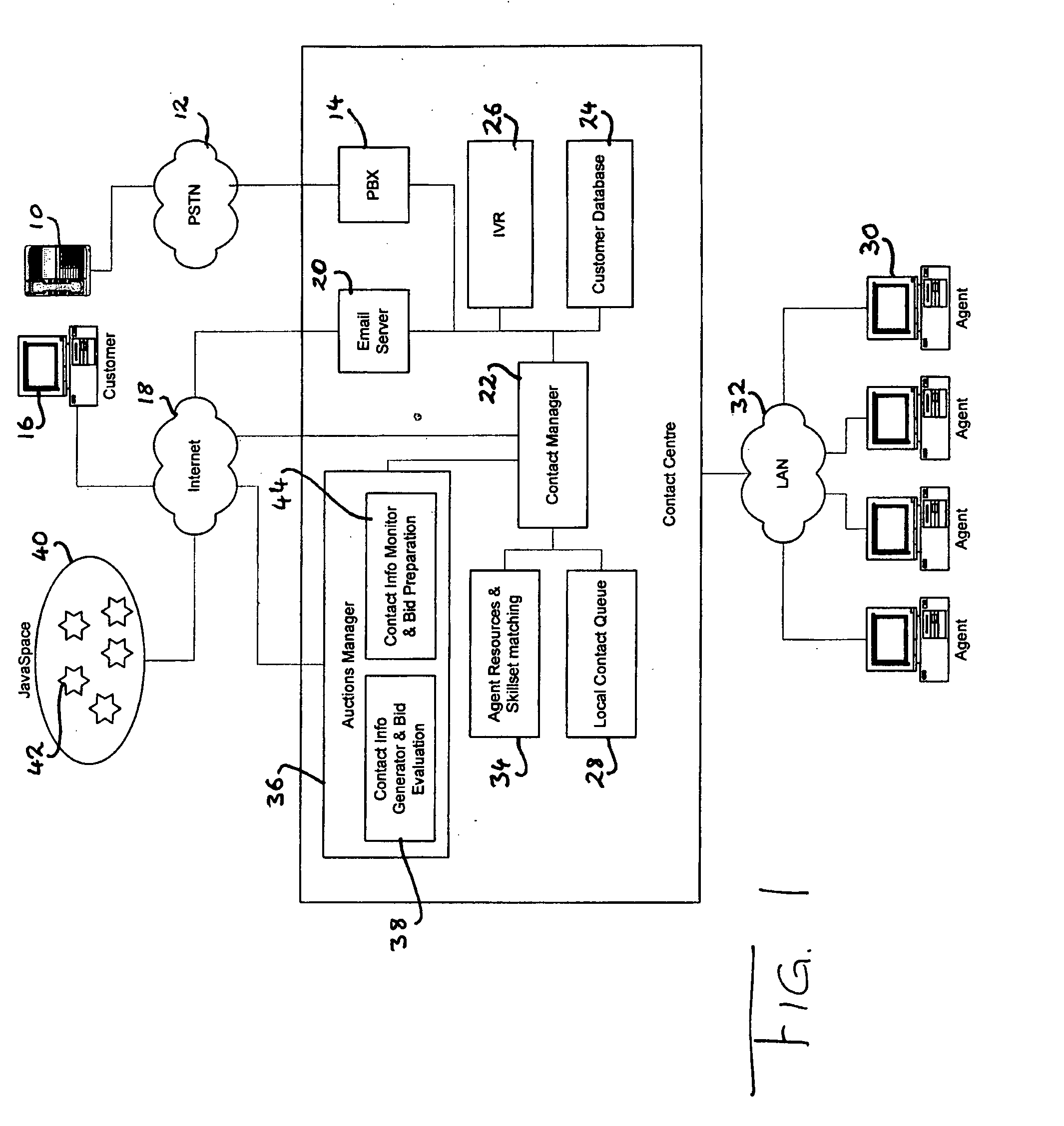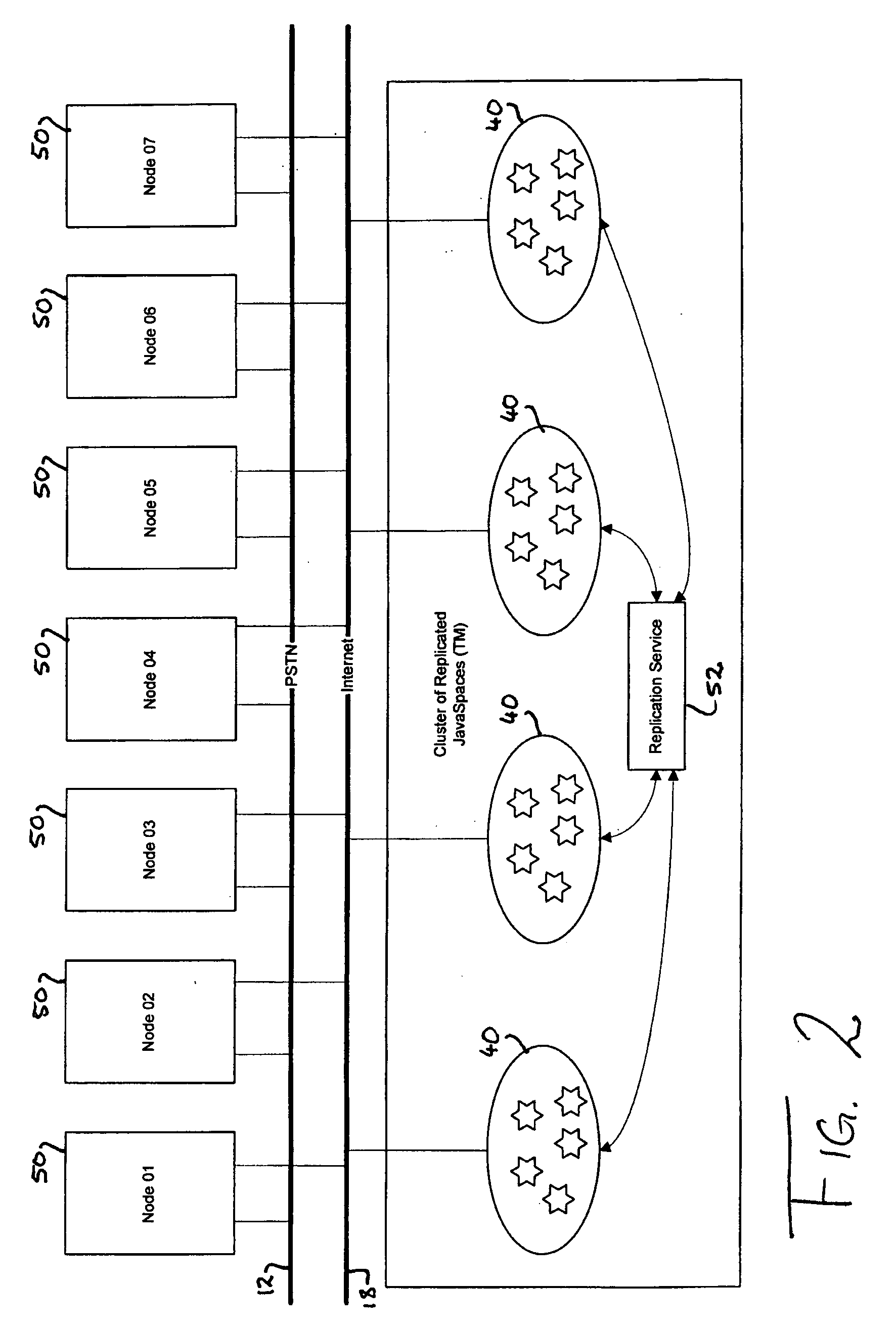Method and system for distributing contacts within a network
a network and contact technology, applied in the field of methods and systems for distributing contacts within a network, can solve the problems of insufficient robustness, limited current contact distribution methods, and increase the amount of status or event information being passed across the network accordingly, so as to promote scalability of the network and improve local performance. the effect of resource drain
- Summary
- Abstract
- Description
- Claims
- Application Information
AI Technical Summary
Benefits of technology
Problems solved by technology
Method used
Image
Examples
Embodiment Construction
[0090]FIG. 1 shows the architecture of a multimedia contact centre which is adapted to receive and process contacts from outside parties such as customers of an organisation. The contacts may be emails, text messages, phone calls, video calls, internet chat sessions or any other type of communications. For simplicity, the contact centre is shown with the capacity for dealing with two types of contacts, namely voice calls which are received from a customer's phone 10 via the public switched telephone network (PSTN) 12 and a private branch exchange (PBX) 14, and emails received from a customer's PC 16 via the Internet 18 and an email server 20, both in conventional fashion. Of course the phone calls may be made via the Internet or wirelessly, and the emails could be received over a wide area network or local area network, and numerous other methods of communication between a customer and a contact centre will readily present themselves to the skilled person.
[0091] When a contact is r...
PUM
 Login to View More
Login to View More Abstract
Description
Claims
Application Information
 Login to View More
Login to View More - R&D
- Intellectual Property
- Life Sciences
- Materials
- Tech Scout
- Unparalleled Data Quality
- Higher Quality Content
- 60% Fewer Hallucinations
Browse by: Latest US Patents, China's latest patents, Technical Efficacy Thesaurus, Application Domain, Technology Topic, Popular Technical Reports.
© 2025 PatSnap. All rights reserved.Legal|Privacy policy|Modern Slavery Act Transparency Statement|Sitemap|About US| Contact US: help@patsnap.com



